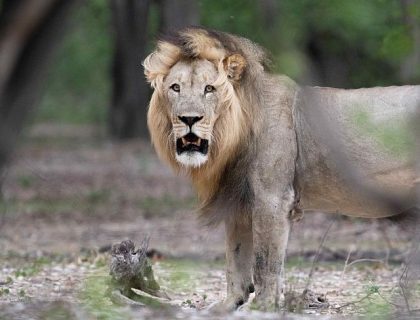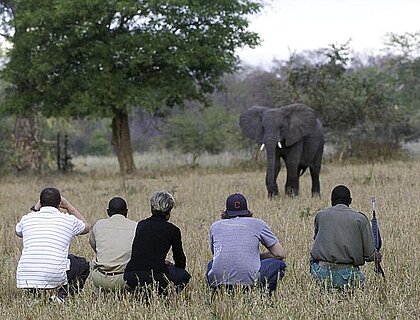Head to Liwonde National Park to see sable, huge herds of elephant and magnificent birdlife.
Scroll for more

This languid, palm-fringed river attracts extraordinary concentrations of thirsty wildlife in the dry season. You’ll find huge breeding herds of elephant, dense hippo pods (some 1,000 strong), and sun-bathing crocodiles lining the sandbanks. Its floodplains stretch more than 3 km wide in places, dotted with reedbuck, impala, warthog, and the occasional lion or leopard. Beyond the floodplain, buffalo and kudu graze in the dappled woodlands, while the rhythmic hum of cicadas completes the scene.
In the higher water months of late summer and autumn, a riverboat arrival is a magical way to first glimpse Liwonde’s beauty — gliding past kingfishers and fish eagles as the park opens up around you.
The park has become home to a population of black rhinos: 17 were relocated from South Africa in 2019. This was one of the largest international black-rhino moves in recent history. These are carefully monitored and protected with no poaching incidents.

Liwonde is easy to combine with the southern Lake Malawi resorts of Makakola Retreat or Pumulani Lodge (approx. 1½ to 2½ hours drive away). It’s also a comfortable drive to Satemwe tea plantations and even Majete Game Reserve.
Interesting Fact - More than 40,000 wire snares were removed after African Parks took over management in 2015—an important milestone in the park’s revival from years of heavy poaching.

Liwonde is an easy drive from Blantyre or southern Lake Malawi, making it simple to include in a Malawi itinerary. You can also drive directly from Lilongwe (4-5 hours) or take a seat-in-charter flight (with a minimum of two people.)
What activities are available?
Game drives, guided walks, boat safaris including breakfast cooked on the boat, are all possible here.
When is the best time for wildlife viewing?
From May to October, when animals concentrate along the Shire River to quench their thirst.
Ready to see Malawi’s wildlife heartland? Let us design a safari combining Liwonde’s river plains with the lake or the southern reserves.
